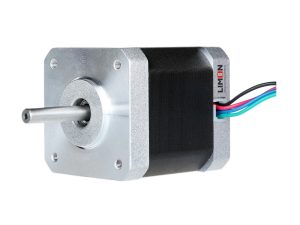In the world of motion control, choosing between a 2-phase stepper motor and a 5-phase stepper motor can define your machine’s performance—especially when it comes to precision, smoothness, and system complexity. Here’s a breakdown to help you make the right decision.
Step Angle & Resolution
2-Phase Stepper Motor: Offers a standard full-step angle of 1.8° (200 steps/rev). With microstepping (e.g., 16x), it can reach a resolution of 0.1125°, making it suitable for general-purpose precision tasks.
5-Phase Stepper Motor: Boasts a finer full-step angle of 0.72° (500 steps/rev). With the same microstepping, it can achieve an ultra-fine resolution of 0.045°, perfect for high-resolution positioning.
Torque Ripple & Motion Smoothness
2-Phase Motor: More prone to torque ripple, vibration, and mechanical resonance, especially at low speeds.
5-Phase Motor: Distributes magnetic force across more phases, resulting in smoother motion, minimal vibration, and better stability in low-speed precision applications.
Driver Complexity & System Cost
2-Phase: Simpler driver architecture (only two windings) = lower cost, easy integration, and wider availability.
5-Phase: Requires more complex drivers with five windings and independent phase control. This increases both cost and design complexity, but delivers better performance in return.
Speed-Torque Tradeoff
2-Phase Motor: Performs well at higher speeds, retaining usable torque, though it may suffer from resonance zones.
5-Phase Motor: Delivers consistent torque at low speeds, but torque drops faster at high speeds due to increased switching frequency.
How to Choose Between 2-Phase and 5-Phase Stepper Motors
✔️ Precision Requirements
Choose 5-phase stepper motors for high-accuracy applications like medical devices, inspection equipment, or optical systems.
Stick with 2-phase stepper motors for CNC routers, 3D printers, or automated feeders.
✔️ Motion Smoothness & Noise
Opt for 5-phase in noise-sensitive environments (e.g., labs or imaging devices).
2-phase may need damping or closed-loop control for smoother results.
✔️ Budget & Supply Chain
2-phase wins on cost-efficiency, driver compatibility, and supplier variety.
5-phase systems are higher-end, with fewer vendors and premium pricing.
✔️ Engineering Resources
Go for 2-phase motors if you’re looking for plug-and-play integration.
Use 5-phase if your team has motion control experience and a project that justifies the complexity.

Summary: Which Stepper Motor Should You Choose?
| Motor Type | Best For |
|---|---|
| 2-Phase Stepper Motor | Budget-friendly, general-purpose automation |
| 5-Phase Stepper Motor | High-precision, vibration-free, mission-critical systems |
Choose a 2-phase stepper motor for simplicity, cost control, and widespread use.
Choose a 5-phase stepper motor when your project demands exceptional positioning accuracy and motion stability—and your budget can handle it.




